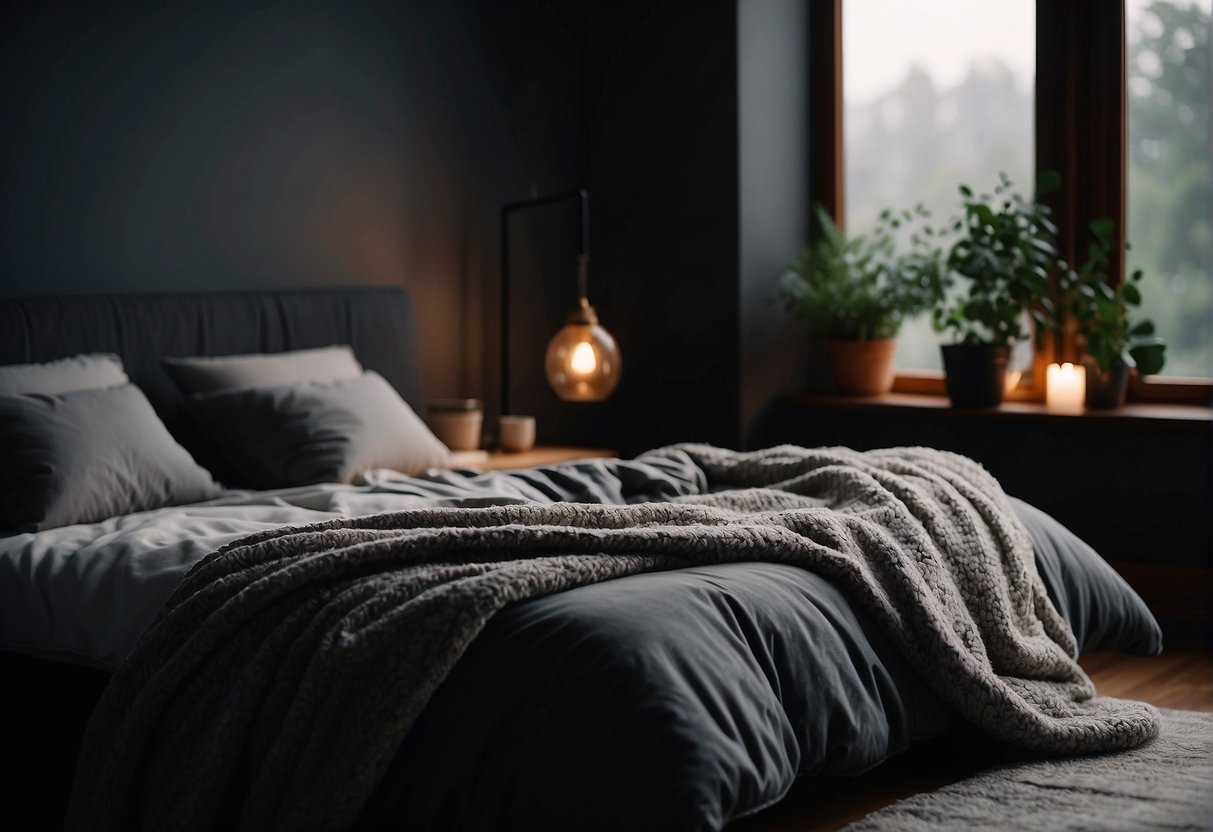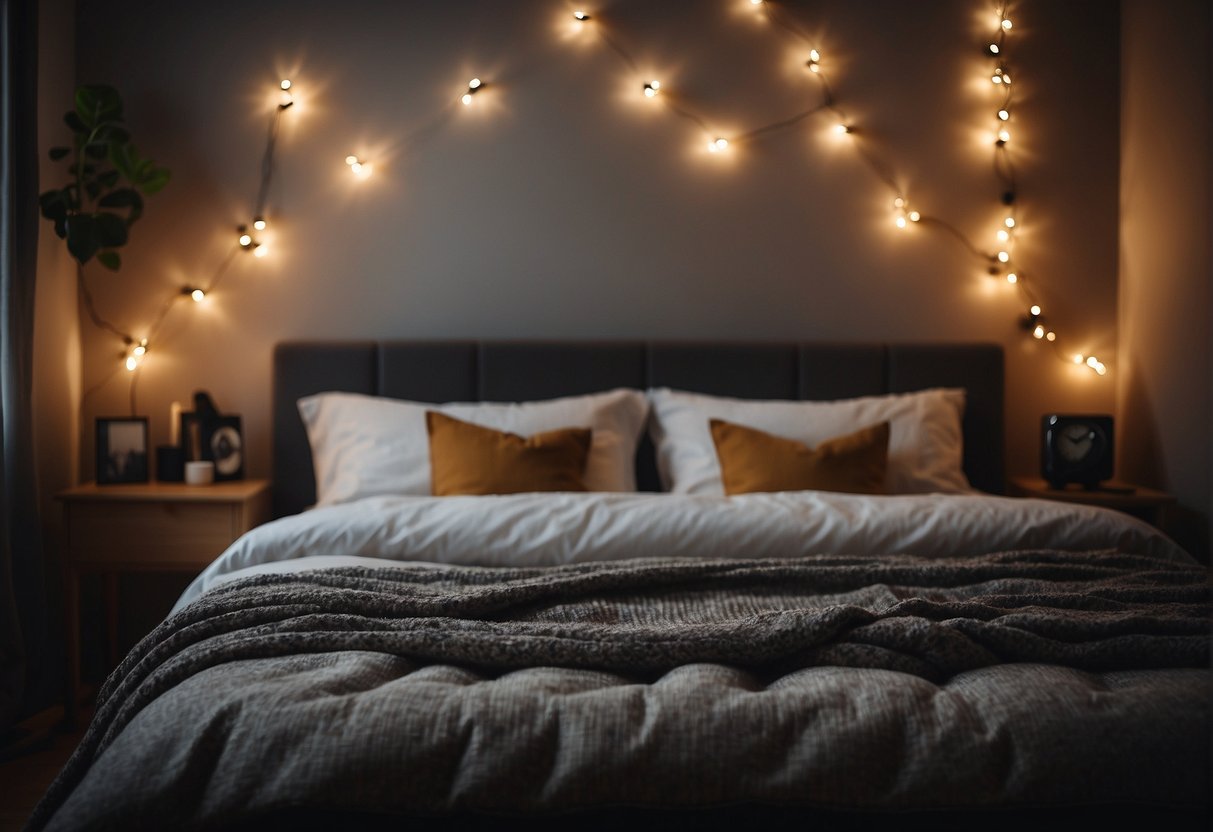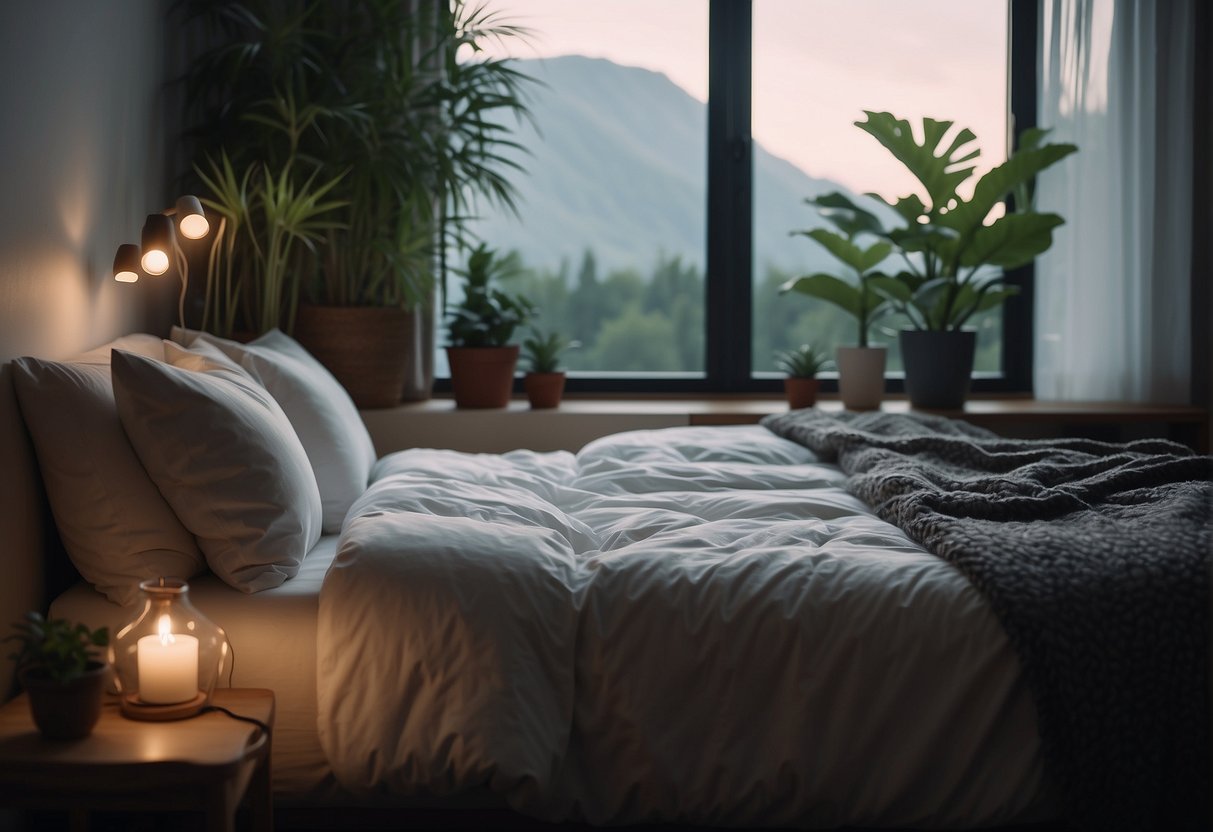How to Sleep Longer Without Waking Up: Proven Techniques for a Restful Night
Getting a good night’s sleep is essential for maintaining physical and mental health, but many people struggle with waking up frequently throughout the night. Learning how to sleep longer without waking up can greatly improve one’s quality of life and overall well-being.

One key factor to consider when aiming for uninterrupted sleep is understanding the different stages of sleep and the role they play in allowing the body and mind to rest and recover. Additionally, creating a sleep-supportive environment and prioritizing sleep hygiene are important in ensuring continuous and restorative sleep.
Key Takeaways
- Comprehending sleep cycles contributes to restful and uninterrupted sleep
- A conducive environment helps in enhancing sleep quality
- Proper sleep hygiene and stress management promote longer, undisturbed sleep
Understanding Sleep Cycles
The Importance of REM Sleep
I’d like to highlight the significance of REM sleep. This is the stage where the brain is highly active, and most dreams occur. During REM sleep, the body undergoes various physiological changes such as accelerated heart rate and increased blood pressure. It plays a vital role in learning, memory consolidation, and overall brain health. Researchers have found that REM sleep reactivates brain regions that were used during waking hours, which can help strengthen connections and improve cognitive function (source).
Regulating Your Circadian Rhythm
Understanding and regulating your circadian rhythm can have a significant impact on your ability to sleep longer without waking up. Your circadian rhythm is a set of biological processes, including the sleep-wake cycle, that are synchronized with the Earth’s 24-hour day. To achieve better sleep, consider the following:
- Consistent sleep schedule: Maintaining a regular bedtime and wake-up time, even on weekends, helps regulate your internal clock.
- Exposure to natural light: Daylight exposure can help regulate your sleep-wake cycle. Aim for at least 30 minutes of sunlight daily, preferably in the morning.
- Nighttime sleep environment: Creating a comfortable and dark sleep environment is crucial for uninterrupted rest. Eliminate noise, reduce light exposure, and invest in a supportive mattress and pillow.
- Limit stimulants close to bedtime: Avoid caffeine, nicotine, and alcohol before bedtime as they can disrupt your ability to fall asleep and stay asleep.
By understanding your sleep cycles, particularly the role of REM sleep, and being mindful of your circadian rhythm, you can make adjustments to improve the duration and quality of your sleep.
Creating a Restful Environment

Optimizing Your Bedroom for Sleep
As a sleep expert, I understand the importance of a well-designed bedroom in improving sleep quality. To create an ideal sleep environment, focus on factors such as temperature, comfort, and decluttering.
A comfortable mattress and pillow plays a crucial role in getting a good night’s sleep. Additionally, maintaining a cool room temperature is essential for uninterrupted sleep. Aim for a temperature between 60-67°F (15-19°C).
It’s also important to declutter your sleeping space. A neat and organized room promotes tranquility and relaxation. This includes keeping electronic devices out of the bedroom, as they can generate mental distractions and emit artificial light that interferes with sleep.
The Role of Light and Noise
Both light and noise can greatly impact the quality of your sleep. Exposure to natural light during the day helps regulate your sleep-wake cycle and prepares your body for sleep in the evening. Conversely, exposure to artificial light at night can disrupt your natural circadian rhythm.
To minimize the impact of light, I recommend using blackout curtains or a sleep mask, and avoiding screens at least one hour before bedtime.
Noise can also interfere with your ability to fall and stay asleep. A quiet environment is essential for restful sleep. If you live in a noisy area, consider using earplugs, a white noise machine, or a fan to help drown out disruptive sounds.
By creating a restful environment, you’ll be well on your way to enjoying longer, more refreshing sleep.
Diet and Exercise

Foods That Promote Sleep
Incorporating certain foods into my diet has been beneficial for improving sleep quality. Some foods contain substances that help the body relax and induce sleep. For example, warm milk is known to contain tryptophan, an amino acid that helps produce the sleep hormone melatonin. Additionally, whole grains like rice and quinoa, and fruits such as cherries and bananas, are rich in both tryptophan and carbohydrates, enhancing sleep even further1.
It’s also important to note that large meals should be avoided close to bedtime, as they can cause discomfort and indigestion, making it difficult to fall asleep or stay asleep. On the other hand, a light snack combining protein and complex carbohydrates an hour or two before bed might be helpful2.
Physical Activity and Rest
Regular physical activity has been linked to better sleep quality and duration3. Exercise helps regulate circadian rhythms, body temperature, and stress levels, all of which are crucial for getting a good night’s sleep. However, the timing of exercise is also important: I found that engaging in moderate to vigorous physical activity early in the day or at least 3 hours before bedtime works best for me4.
Developing a consistent pre-sleep routine can help signal to my body that it’s time to wind down and prepare for sleep. Some effective relaxation techniques include deep breathing, meditation, and gentle stretching. I also make sure my sleep environment is conducive to rest by keeping it cool, dark, and quiet.
Sleep Hygiene Best Practices
Establishing a Sleep Schedule
One essential practice for ensuring a good night’s sleep is to establish a consistent sleep schedule. I recommend setting a specific time for going to bed and waking up, even on weekends. This consistency helps regulate our body’s internal clock, making it easier to fall asleep and stay asleep longer.
- Start by determining the ideal bedtime that allows for 7-9 hours of sleep.
- Try to wake up at the same time daily, even on weekends or days off.
- Resist the temptation to take long naps during the day as they can disrupt the sleep-wake schedule.
Pre-Sleep Rituals and Routines
In addition to a schedule, incorporating pre-sleep rituals and routines can also help improve the length and quality of sleep. Creating a relaxing pre-sleep environment is key.
- Dim the lights: Lowering light levels signals the brain that it’s time to wind down.
- Avoid electronics: Devices like phones and tablets emit blue light that disrupts our natural sleep hormones.
- Establish a bedtime routine: Engaging in calming activities like reading, taking a warm bath, or practicing gentle yoga can help signal the body that it’s time to rest.
- Limit caffeine: Avoid consuming caffeinated beverages or foods within 4-6 hours of bedtime as they can interfere with the ability to fall asleep.
By following these simple best practices, I can create an environment that promotes restful sleep and helps me sleep longer without waking up.
Managing Stress and Anxiety
Relaxation Techniques
One technique I find helpful is guided imagery. Visualizing peaceful scenes or positive images before sleeping can create a sense of tranquility, promoting relaxation and restful sleep1.
Another effective approach is deep breathing exercises. These exercises help regulate the nervous system by triggering the body’s relaxation response2. A simple technique involves inhaling for a count of four, holding the breath for four counts, and exhaling for four counts.
Practicing progressive muscle relaxation (PMR) can also alleviate stress and anxiety3. Start by tensing and relaxing each muscle group, from your toes to your head. This technique brings awareness to the body and encourages relaxation.
The Impact of Stress on Sleep
Prolonged stress and anxiety can have a detrimental impact on sleep quality. High stress levels can lead to insomnia, early awakenings, and poor sleep quality4. By managing stress and anxiety, it can improve sleep length and reduce the chances of waking up during the night.
| Issues related to stress | Sleep quality impact |
|---|---|
| Insomnia | Decreased |
| Early awakenings | Decreased |
| Poor sleep quality | Decreased |
Overall, managing stress and anxiety is essential for achieving longer, undisturbed sleep. Incorporating relaxation techniques can positively impact sleep quality, along with promoting a healthier state of mind.